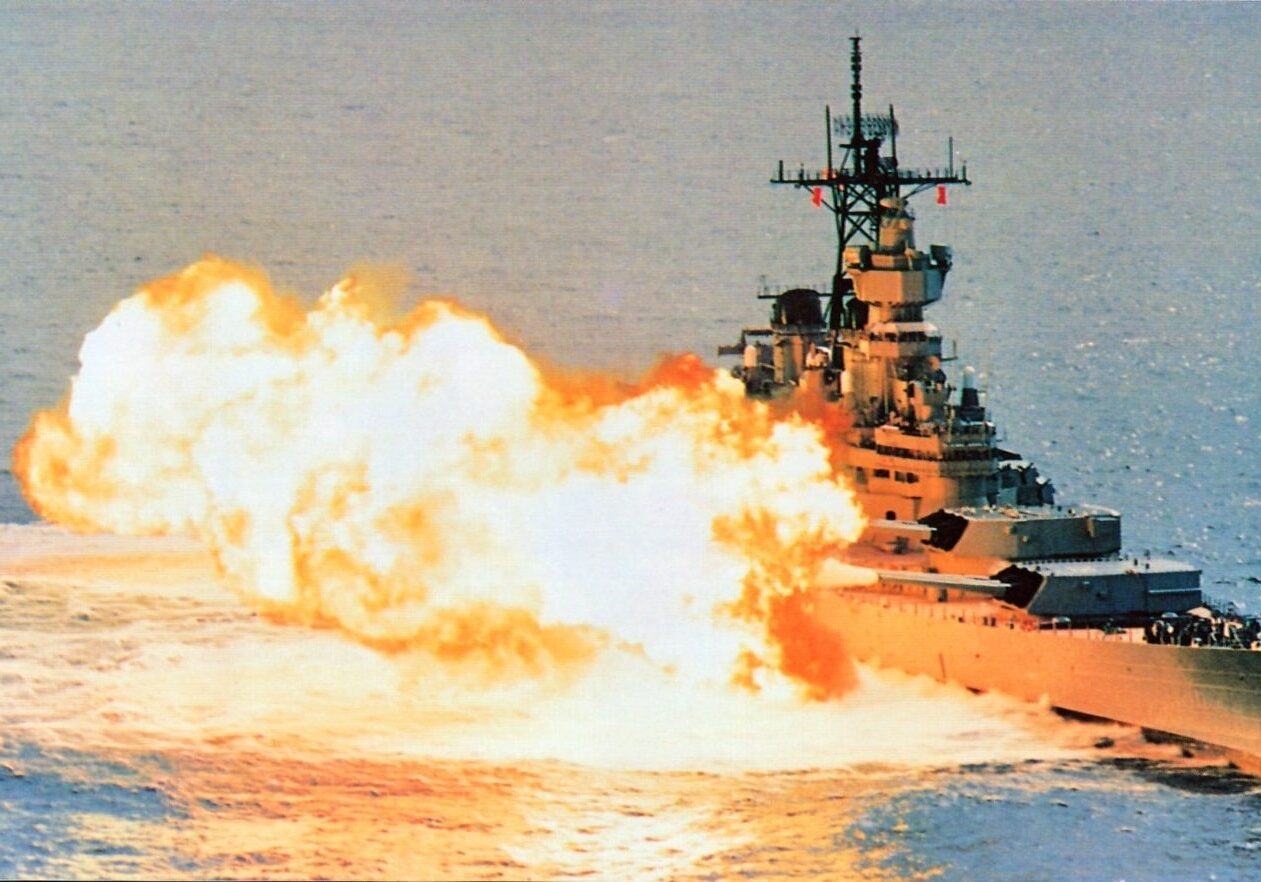The Montana-Class battleships were never built. However, had they actually been put to sea, they would have been the most powerful of all U.S. Navy battleships – ever. Here is what expert explained about them and why they matter: Influenced by reports that the Imperial Japanese Navy (IJN) was developing a “super-battleship,” the United States Navy ordered its own massive warship, one that could be armed with 18-inch (457mm) main armament. The new warships, named the Montana-class, were authorized under the “Two Ocean Navy” building program and funded in Fiscal Year 1941.
A total of five of the ships were ordered, with the lead in her class (BB-67) to be built at the Philadelphia Navy Yard along with Ohio (BB-68); while Maine (BB-69) and New Hampshire (BB-70) were to be constructed at the New York Navy Yard in Brooklyn; with Louisiana (BB-71) to be built at the Norfolk Navy Yard in Portsmouth, Virginia.
Displacing 60,500-tons, these were the largest warships ever ordered by the United States Navy. The ships were nearly a third larger than the preceding Iowa-class, at 920 feet in length with a beam of 121 feet, and would have been even larger than the HMS Vanguard, the last battleship to be built.
The Montana-class ended up being the last battleships ever ordered by the United States Navy, and none were ever actually built.
What Could Have Been
The program was scaled back almost as soon as it began. The 18-inch guns were replaced by the same 16-inch (406mm) guns as the Iowa-class. However, it was still anticipated that the guns could fire a projectile 42,000 yards or nearly 23 miles!
The designers essentially “supersized” the Iowa-class, but it came at a cost. The Montana-class would have required a crew of at least 2,355 personnel – and perhaps as many as 2,780 if fielded as a flagship of the fleet. The high speed of the “fast battleships” was sacrificed in favor of an additional 16-inch triple turret and much-increased armor protection. The warships wouldn’t have been fast enough to escort carriers.
That armor – which would have weighed some 21,000 tons – included bulkheads with 18-inches of plating, while the turret’s barbettes would have been protected by 21.3 inches of armor, and the decks plated up to 6-inches at their stoutest. In addition, the plans called for an outer belt extending from the armor deck to the bulged hull and an internal belt descending from the middle deck to the bottom and constituted an anti-torpedo bulkhead. The great beam would have prevented the Montana-class from traversing the Panama Canal.
The class was designed to be a “Yamato killer,” and thus capable of going toe-to-toe with the IJN’s most powerful battleships, which did in fact did have 18-inch guns and were protected by up to 26-inches of armor protection at her thickest.
It wasn’t to be – and that was likely a good thing for the United States.
After the Battle of Midway, the U.S. Navy saw the impact that the aircraft carrier had in pushing back the Japanese. That fact made it clear that the Montana-class was not the right ship for the job, and the U.S. Navy’s need for more aircraft carriers, amphibious and anti-submarine vessels resulted in a suspension of the program in May 1942 before a single keel had been laid down.
Just over a year later, on July 21, 1943, the program was formally canceled. Not a single Montana-class battleship, the most powerful U.S. Navy vessel ever designed, was ever constructed. The “Yamato killer” wasn’t needed. The IJN’s Yamato was sunk by carrier-based bombers and torpedo bombers with the loss of most of her crew on April 7, 1945. Her sister ship, Musashi, had met a similar fate the previous October.
Those who would have liked to have seen how the Montana-class might have performed will have to settle for the video game series World of Warships.
Now a Senior Editor for 1945, Peter Suciu is a Michigan-based writer who has contributed to more than four dozen magazines, newspapers and websites. He regularly writes about military hardware, and is the author of several books on military headgear including A Gallery of Military Headdress, which is available on Amazon.com. Peter is also a Contributing Writer for Forbes.

